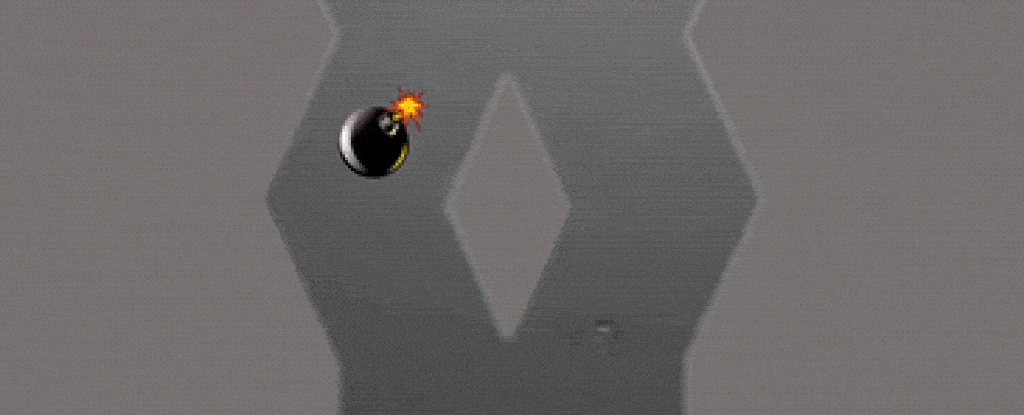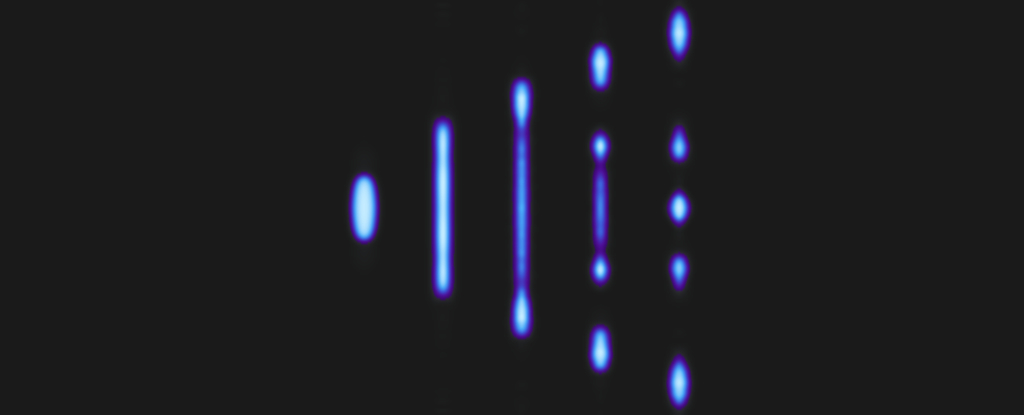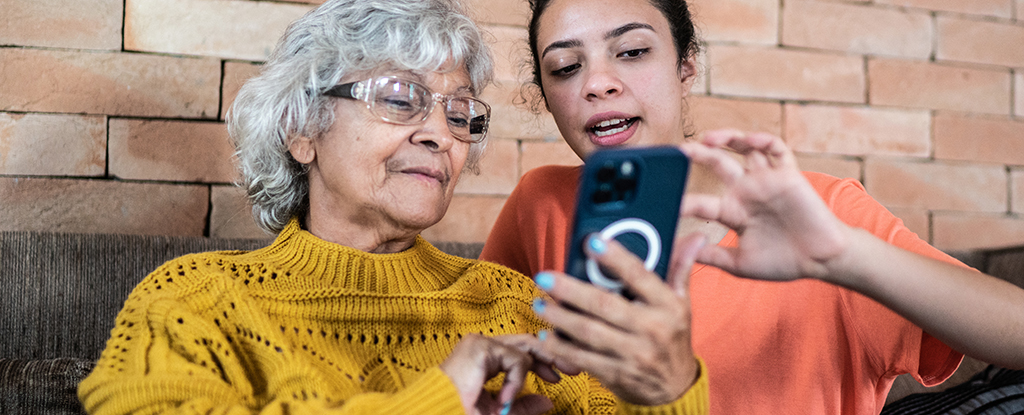Quantum physics is fundamentally weird, so much so that we need thought experiments of hidden cats in boxes and metaphors of spinning coins to even begin to comprehend its laws.
Yet even in our classical world, where physics is more intuitive, shades of quantum behavior can be represented using relatively simple scenarios.
Researchers experimenting with tiny droplets of oil running down two adjacent channels in a bath of vibrating fluid have discovered that the behavior of the droplets matches up with a famous quantum thought experiment.
“It turns out that this hydrodynamic pilot-wave experiment exhibits many features of quantum systems which were previously thought to be impossible to understand from a classical perspective,” says John Bush, a fluid dynamicist at Massachusetts Institute of Technology (MIT).
Bush and his colleague, MIT physicist Valeri Frumkin, emulated the Elitzur-Vaidman bomb tester – a well-known example of interaction-free measurement – being able to derive details on one object’s quantum state using the gentle caress of another object’s wave without disturbing either’s delicate nature.
The approach has been applied to low-intensity imaging technology, though despite its uses, there’s no consensus on what ‘interaction free’ physically means.
In the bomb tester experiment, a photon is split into two states at once (a superposition). Those two states travel down one of two channels, and half the time, one of those channels has a ‘bomb’ in it – an analogy for an object that can destroy the superposition by absorbing a photon and having its own quantum state destroyed in the process
If a photon emerges from the system, it’s likely it didn’t run into any bombs. Now the magic of quantum physics is that the state of the split photon when it’s recombined into a single whole can also tell us if the bomb was there or not – even when the photon took the other channel – without ever ‘detonating’ the bomb.
This doesn’t make sense from a classical physics viewpoint, but that’s why we have quantum physics. In basic terms, the bomb interferes with the probabilities that superposition creates for the photon. That interference can be detected when the photon’s wave-like nature is measured at the end.
It’s therefore surprising to find the same result in this study in a classical setup.
Droplets took the place of photons, and the liquid ripples they created acted like the superposition probabilities – if those expanding ripples hit the bomb, this affects the droplet as the two channels merge again, even if the droplet itself took the other channel.
Technically, the experiment has more in common with an interpretation of quantum experiments called pilot-wave theory, where interacting ripples carrying tiny surfing particles guide an object’s characteristics.
Statistically, the classical experiment matched up with the Elitzur-Vaidman bomb tester. The researchers say it shows a bridge between the fixed, solid world of classical physics and the fuzzier, less certain quantum realm.
This helps us understand more about why quantum behaviors like waves of possibility appear to ‘collapse’ into discrete states.
“Here we have a classical system that gives the same statistics as arises in the quantum bomb test, which is considered one of the wonders of the quantum world,” says Bush.
“In fact, we find that the phenomenon is not so wonderful after all. And this is another example of quantum behavior that can be understood from a local realist perspective.”
The research has been published in Physical Review A.





